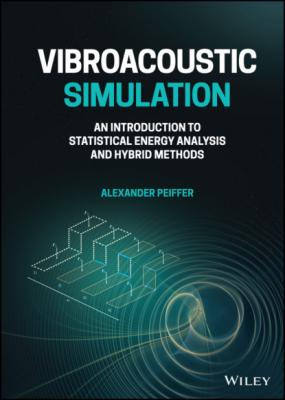Vibroacoustic Simulation. Alexander Peiffer
Чтение книги онлайн.
Читать онлайн книгу Vibroacoustic Simulation - Alexander Peiffer страница 26
 alt="upper R Subscript f g Baseline left-parenthesis tau right-parenthesis equals upper E left-bracket f left-parenthesis t right-parenthesis g left-parenthesis t plus tau right-parenthesis right-bracket equals upper E left-bracket f left-parenthesis t prime minus tau right-parenthesis g left-parenthesis t Superscript prime Baseline right-parenthesis right-bracket equals upper R Subscript g f Baseline left-parenthesis negative tau right-parenthesis period"/> (1.155)
alt="upper R Subscript f g Baseline left-parenthesis tau right-parenthesis equals upper E left-bracket f left-parenthesis t right-parenthesis g left-parenthesis t plus tau right-parenthesis right-bracket equals upper E left-bracket f left-parenthesis t prime minus tau right-parenthesis g left-parenthesis t Superscript prime Baseline right-parenthesis right-bracket equals upper R Subscript g f Baseline left-parenthesis negative tau right-parenthesis period"/> (1.155)
So we get finally
For the stationary ergodic process we can replace the ensemble averaging by the average over time
1.5.4 Fourier Analysis of Random Signals
The Fourier transform of a random signal would lead to infinite results because it is not approaching zero. Fourier series cannot be applied too, because there is no periodicity in the signal. A smart solution is to use the correlation function for the Fourier transform and not the random signal itself. The correlation is a decaying function that is suitable for infinite integration due to the 1/T factor in (1.157). We start with the pair of Fourier transforms of the autocorrelation:
Sff(ω) is called the auto spectral density auto spectral density of the signal f(t). It is a measure of how the signal energy is distributed over the frequency range. This becomes quite obvious if we look at τ = 0 and use (1.153):
The autocorrelation is a real symmetric function, thus the auto spectrum as Fourier transform of this is a symmetric real valued function in frequency.
We define the cross spectral density function as the Fourier transform of the cross correlation function from Equation (1.151) and the back transformation:
Changing the integration constant τ=−τ′ and using symmetry (1.156) reveals
Mathematically, the expected value of an ergodic processes is derived by the investigation of infinite time periods. However, this can neither be realized in tests nor numerical simulations. We are restricted to specific time slots, so let us assume the Fourier transform of two random signals f(t) and g(t).
It can be shown by a straightforward but lengthy proof by Bendat and Piersol (1980) that the cross spectral density is a complex function given by
Here, we take the signals of infinite duration from an ensemble of recordings. The same can be shown for the autospectrum.
So these important relationships show, that if we have an infinite time period T and we average over a whole ensemble of such records we can determine the auto and cross spectra from this. In practical test and simulation situations we will see that for a given number of time signals of finite time T we can estimate the power- and cross spectral density. For convenience we abbreviate Equation (1.164)